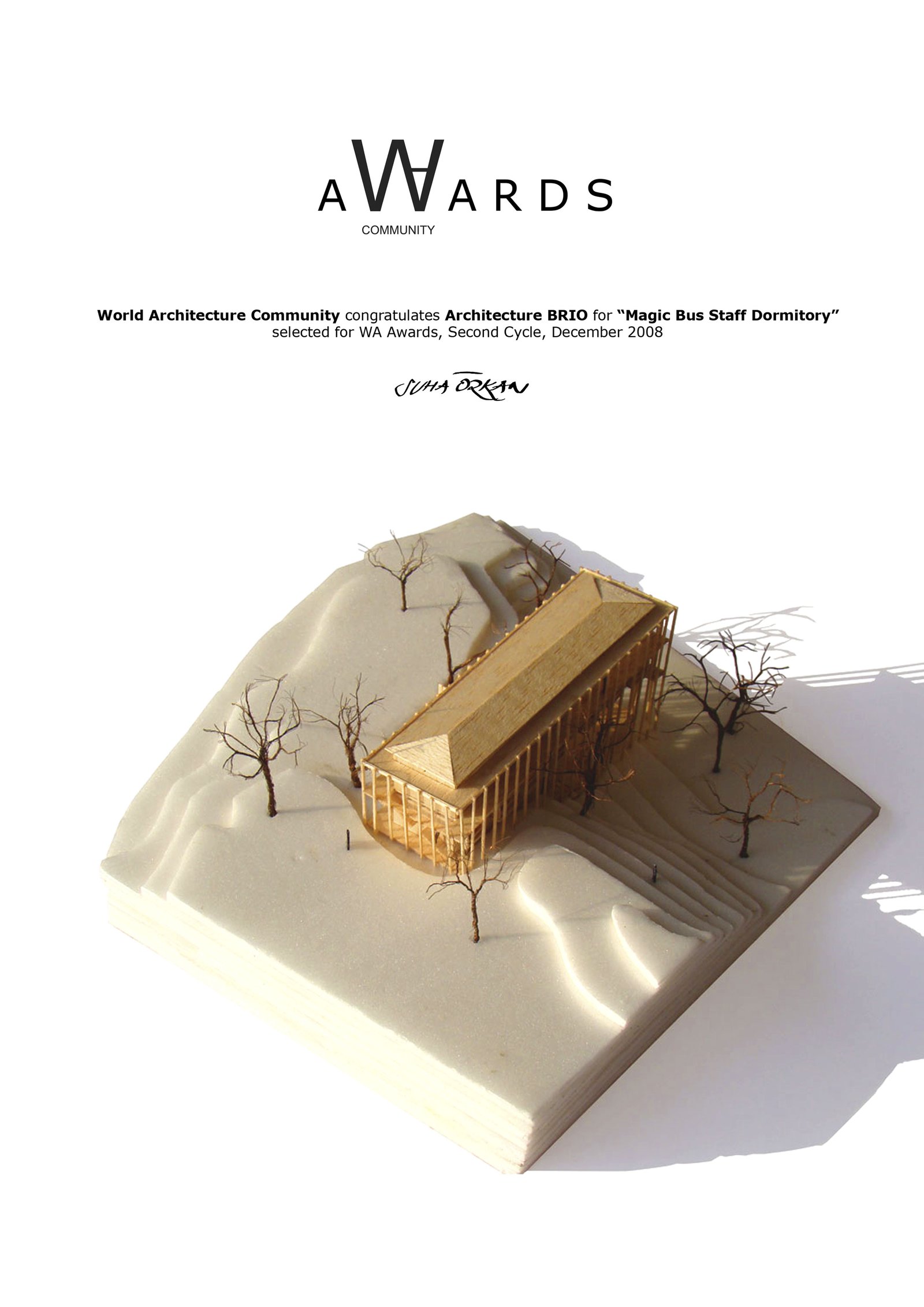- test : test
- test2 :
Architecture BRIO’s Staff Dormitory for Magic Bus is a winning entry in the global 20+10+X World Architecture Community Awards. World Architecture Honorary Members selected the the winning project, together with twenty other projects from across the world. The aim of the WA Community Awards is to highlight and publish remarkable projects. Novelty, originality and creativity in design that reflect and inspire a commitment to the art of architecture are the major criteria.
Magic Bus Staff Dormitory
The dormitory for the staff of the NGO Magic Bus will be located in the valley below the Karjat Dam. Sited on the tip of a small plateau it overlooks paddy fields and sleepy villages. Embedded in the topography, the dormitory reveals different elevations depending on the viewpoint. By utilising the steep slope an intimate low façade faces the entrance court on the forest side. However a more prominent vertical façade faces the paddy fields.
The interior of the dormitory will reveal itself as one moves through the building. Firstly, a staircase cutting through the building mass breaks up the passage on the ground floor. This cut in the building frames the exterior beyond, creating interplay between inside and outside. This staircase then leads you down to a large double height recreational space. Suspending the two-storey structure over the ridge creates this space below. The top floor is surrounded on all sides by a veranda. At the end of a colonnaded passage a large shaded deck overlooks a most spectacular view over the trees, towards the contours of the Matheran mountain range in the distance.
The project combines natural and local materials such as bamboo with wood, concrete and steel. Designed with the help of engineer Vilas Gore of GeoScience Services, the building’s structural system decreases its load on the bamboo poles.
The outer columns are composed of two bamboo poles connected by steel strips. To support the interior, steel dowels are inserted between the columns. The columns connect with trusses made of pre-cast concrete and steel tension cables that span between.
Read more: for an overview of awards
